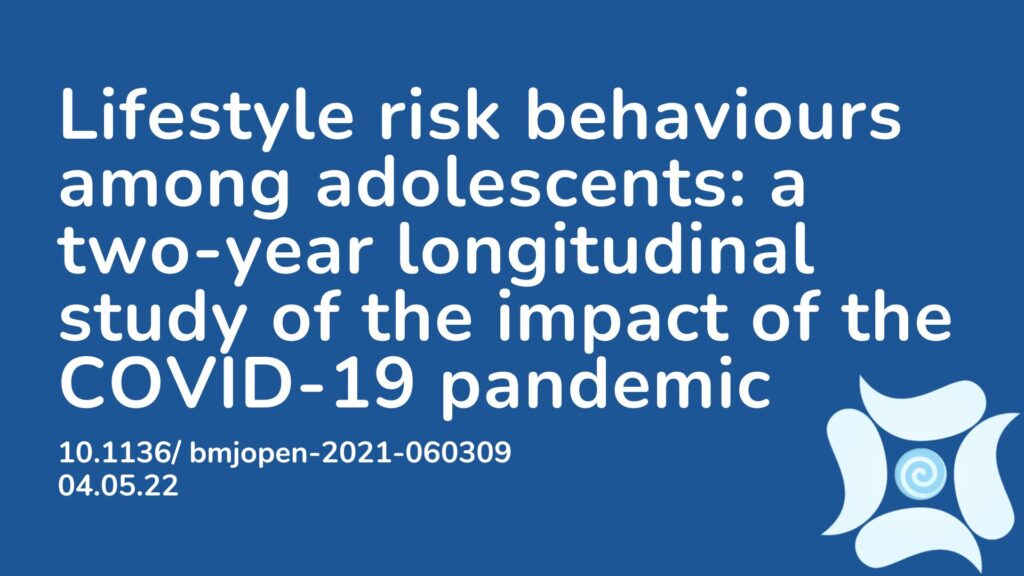Summary: Whilst mortality and morbidity related to COVID-19 has typically been higher among adults compared with adolescents, lockdowns, restrictions and school closures have presented risk factors of its own to adolescent health. The objective of this prospective cohort study was to examine dietary and lifestyle changes amongst Australian adolescents during the COVID-19 pandemic. The study looked at physical inactivity, diet, sleep, screen time and alcohol and tobacco use. The prevalence of insufficient fruit intake, excessive screen time and alcohol and tobacco consumption increased over the two year pandemic period (2019-2021). Given that the pandemic is a continually evolving problem, the impact on adolescent health is likely to continue. It is critically important that priority is given to supporting adolescents to implement positive behaviours, regardless of the duration of the pandemic.
Abstract:
Objective: To examine changes in the prevalence of six key chronic disease risk factors (the “Big 6”), from before (2019) to during (2021) the COVID-19 pandemic, among a large and geographically diverse sample of adolescents, and whether differences over time are associated with lockdown status and gender.
Design: Prospective cohort study.
Setting: Three Australian states (New South Wales, Queensland and Western Australia) spanning over 3000 km.
Participants: 983 adolescents (baseline Mage=12.6, SD=0.5, 54.8% girl) drawn from the control group of the Health4Life Study.
Primary outcomes: The prevalence of physical inactivity, poor diet (insufficient fruit and vegetable intake, high sugar-sweetened beverage intake, high discretionary food intake), poor sleep, excessive recreational screen time, alcohol use and tobacco use.
Results: The prevalence of excessive recreational screen time (prevalence ratios (PR)=1.06, 95% CI=1.03 to 1.11), insufficient fruit intake (PR=1.50, 95% CI=1.26 to 1.79), and alcohol (PR=4.34, 95% CI=2.82 to 6.67) and tobacco use (PR=4.05 95% CI=1.86 to 8.84) increased over the 2-year period, with alcohol use increasing more among girls (PR=2.34, 95% CI=1.19 to 4.62). The prevalence of insufficient sleep declined across the full sample (PR=0.74, 95% CI=0.68 to 0.81); however, increased among girls (PR=1.24, 95% CI=1.10 to 1.41). The prevalence of high sugar-sweetened beverage (PR=0.61, 95% CI=0.64 to 0.83) and discretionary food consumption (PR=0.73, 95% CI=0.64 to 0.83) reduced among those subjected to stay-at-home orders, compared with those not in lockdown.
Conclusion: Lifestyle risk behaviours, particularly excessive recreational screen time, poor diet, physical inactivity and poor sleep, are prevalent among adolescents. Young people must be supported to find ways to improve or maintain their health, regardless of the course of the pandemic. Targeted approaches to support groups that may be disproportionately impacted, such as adolescent girls, are needed.
Article Publication Date: 04.05.22
DOI: 10.1136/ bmjopen-2021-060309



